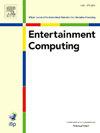Transformation of labor: Educational robotics coding in elementary schools for 21st century skills
IF 2.8
3区 计算机科学
Q2 COMPUTER SCIENCE, CYBERNETICS
引用次数: 0
Abstract
This study aims to examine the effects of educational robotics activities on students’ 21st century skills. In the study, explanatory mixed method design was used. As a quantitative data collection tool, the 21st century skills scale was utilized [47]. In addition to quantitative data, qualitative data were collected from the teachers and students through semi-structured interviews. Within the scope of the research, students participated in robotic design courses with Arduino over the learning management system for ten weeks and participated in a competition with their products at the end of the activity. The activity was held with the participation of 62 students and 10 teachers. The findings of the study showed that educational robotic activities caused a significant increase in the affective domain of the students. While it did not cause any significant increase in the cognitive and sociocultural domains, the average scores of students increased on post-tests compared to the pretests for these two domains. In addition, students’ 21st century skills did not differ according to gender. Although there is no statistically significant difference in pretest–posttest results due to grade level, an increase was observed in posttest averages at each grade level. The observed increase in the post-tests, although not statistical, reveals the positive effect of educational robotic coding in terms of students’ 21st century skills. To support the results of the quantitative data, the analysis of the qualitative data revealed a consensus of both teachers and students on the contribution of such applications to the advancement of contemporary skills. In conclusion, the results of this study show that educational robotic coding can be used to develop 21st century skills of elementary school students.
求助全文
约1分钟内获得全文
求助全文
来源期刊

Entertainment Computing
Computer Science-Human-Computer Interaction
CiteScore
5.90
自引率
7.10%
发文量
66
期刊介绍:
Entertainment Computing publishes original, peer-reviewed research articles and serves as a forum for stimulating and disseminating innovative research ideas, emerging technologies, empirical investigations, state-of-the-art methods and tools in all aspects of digital entertainment, new media, entertainment computing, gaming, robotics, toys and applications among researchers, engineers, social scientists, artists and practitioners. Theoretical, technical, empirical, survey articles and case studies are all appropriate to the journal.
 求助内容:
求助内容: 应助结果提醒方式:
应助结果提醒方式:


